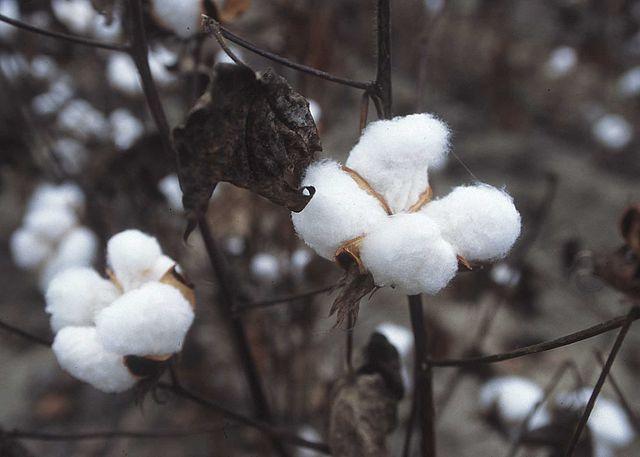
We all know that buying organic is good for the environment. The benefits are multitude: less harmful pesticides and insecticides in the environment, lower water use, and, if done properly, improved topsoil.
That being said, some products provide even greater benefits if planted organically, and near the top of the list is something that nearly every American uses daily: cotton.
Cotton is in our clothes, our shopping bags, our bed sheets, furniture and numerous other products we come across daily. It also plays a role in our food supply through additives like cottonseed oil and cellulose fiber. It is also the backbone of a giant global industry, with supply chains connecting farmers across the world, laborers in textile factories, and retailers both online and in our neighborhoods.
Here’s the problem: Non-organic cotton’s impact on the environment is huge, which is why many say it may be the most important product to buy organic. According to the Roldale Institute, cotton is No. 1 crop in the world for pesticide use, consuming an astounding 16 percent of global pesticides. Many of those pesticides end up in water supplies around the world, including right here in the United States.
Moreover, cotton is one of the crops most intensively reliant on big GMO seed companies like Monsanto. With 83 percent of cotton coming from GMO seeds, it one one of the top four GMO crops produced in the world alongside soy (89 percent), canola (75 percent) and corn (61 percent). According to Liesl Truscott, these massive environmental costs need to be addressed.
“The main challenge is that the market doesn’t work properly – current economic rules don’t attach environmental and social costs to conventional cotton production, so the mainstream market is given a massive hidden subsidy as society and the environment bear these costs instead of the conventional producers,” said Truscott, fiber and materials strategy director and European director for the Textile Exchange.
This massive subsidy is why non-organic cotton remains much, much cheaper than organic cotton. Moreover, organic cotton is hard to find -- something I myself can attest you when I go shopping. And when I do find it, it’s expensive -- when it should be the opposite.
“The question isn’t why organic ‘costs’ more, it should be why conventional production is allowed to avoid taking responsibility for so many costs,” Truscott said.
This is one reason that organic cotton is having numerous challenges in growing its market share and making a strong business case for companies to shift to organic. Part of that is due to the system that put control of inputs like seeds into the hands of a few big companies -- organic seeds are difficult to procure and distribute to farmers. Even when they are available, getting them to farmers in developing countries where most cotton currently comes from is a challenge, as is building the capacity of these farmers to be able to go organic farming and receive necessary certifications.
“Prices, the timeliness of payment and market access are not always strong enough to offset the risk of investment made by the farmer,” Truscott explained.
Nevertheless, there are some bright signs in the industry. In 2014, organic cotton reversed a three-year trend and grew globally by 10 percent. More and more retailers, like C&A, which topped Textile Exchange’s 2014 Report for volume of organic cotton use, are incorporating organic cotton into their supply chains.
This won’t be easy. Companies can’t just purchase more organic cotton; they need to work with suppliers to ensure both quality and transparency along the entire chain. That includes working with initiatives like the Organic Cotton Roundtable to build farmer capacity to produce more organic cotton. Companies that understand this are the ones who will benefit.
“The most successful brands and retailers are implementing new ways of sourcing that involve a more direct relationship with producers, with longer term commitments that incentivize cotton farmers to go organic,” Truscott said.
The final piece of the puzzle is us. Consumer demand is why grocery stores all across the country now carry an increasingly wide array of organic products. The clothing industry is, sadly, far behind, but we can help change that. If more companies see a market for organic clothing products, then this can help address the challenges facing organic cotton all along its supply chain.
“Consumer 'appetite' is, of course, one of the key driving forces behind brands and retailers’ sourcing decisions: the stronger the consumer demand, the stronger the incentive for brands and retailers to make efforts to source organic cotton,” Truscott said. “Raising consumer awareness about the benefits of organic cotton is therefore very important.”
It's clear that organic cotton has a strong role to play in creating a sustainable future. Hopefully, with more impetus from companies, greater consumer demand and increased advocacy from organizations like Textile Exchange, soon it'll be just as easy to buy organic clothing as it is to find organic produce in your local grocery.
Photo Credit: Wikipedia Commons

Nithin Coca is a freelance journalist who focuses on environmental, social, and economic issues around the world, with specific expertise in Southeast Asia.














